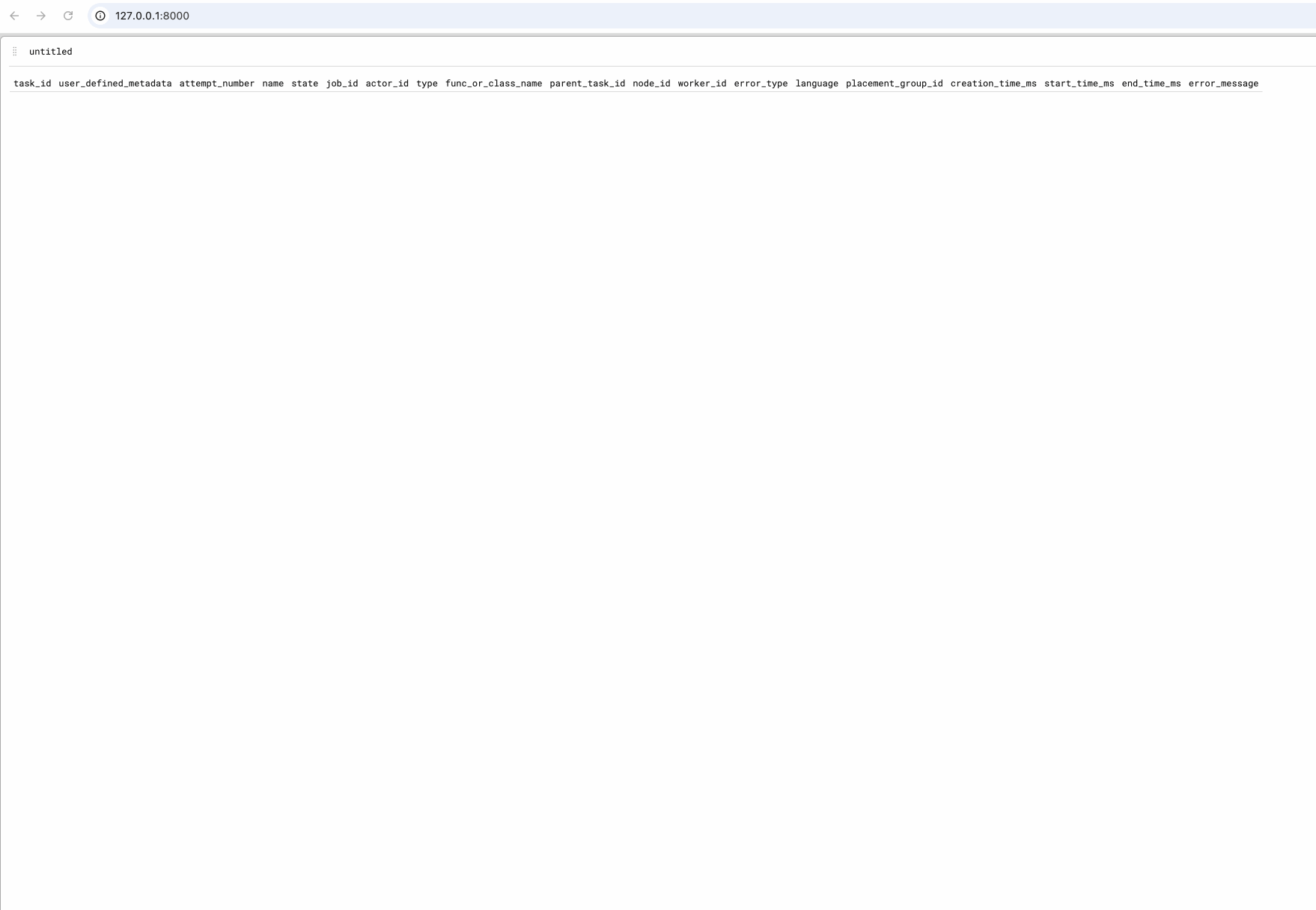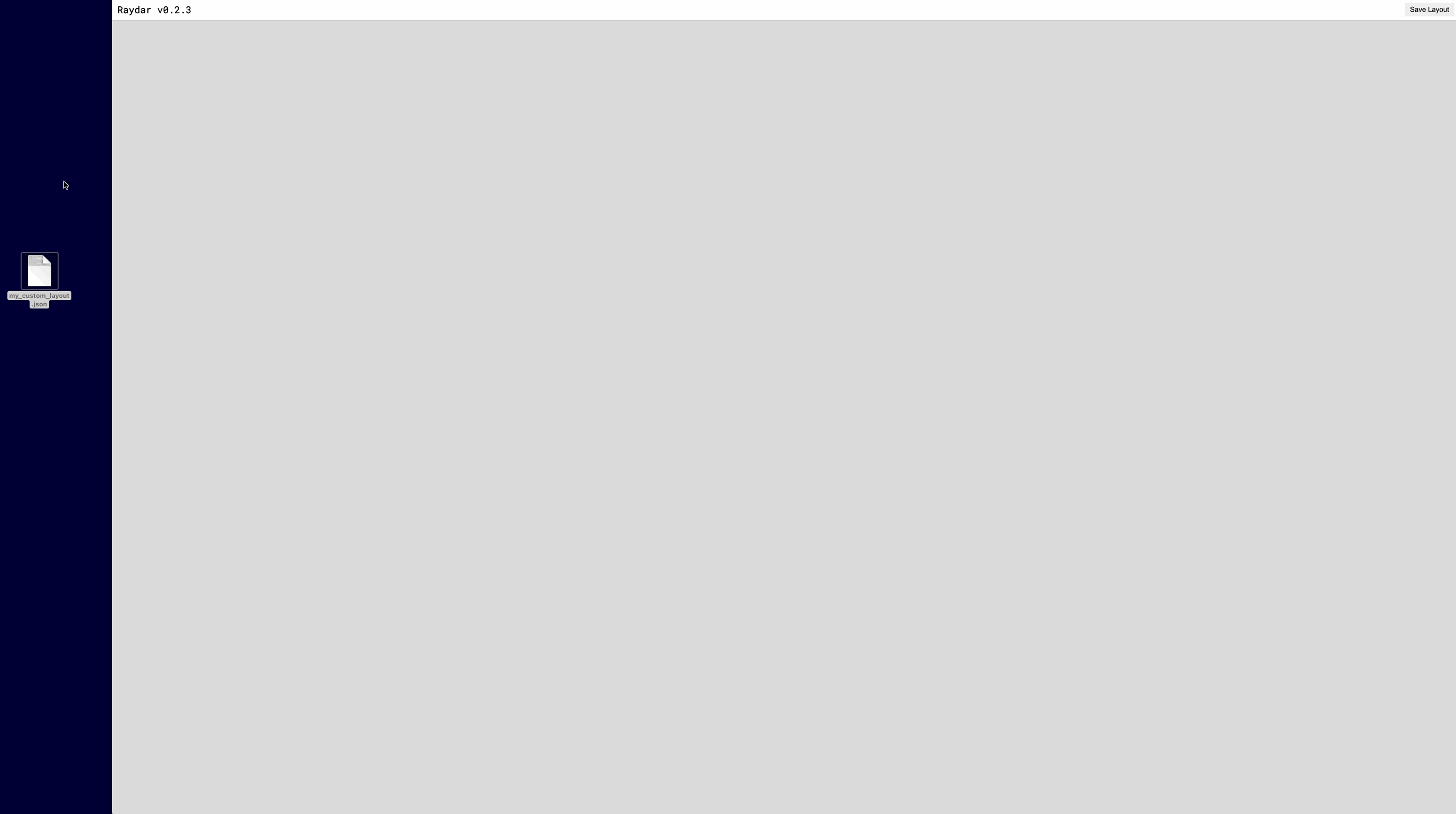A perspective powered, user editable ray dashboard via ray serve.
Ray offers powerful metrics visualizations powered by graphana and prometheus. Although useful, the setup can take time - and customizations can be challenging.
Raydar, enables out-of-the-box live cluster metrics and user visualizations for Ray workflows with just a simple pip install. It helps unlock distributed machine learning visualizations on Anyscale clusters, runs live and at scale, is easily customizable, and enables all the in-browser aggregations that perspective has to offer.
- Convenience wrappers for the tracking and persistence of ray GCS task metdata. Can scale beyond the existing ray dashboard / GCS task tracking limitations.
- Serves a UI through ray serve for the vizualization of perspective tables.
- A python interface to create and update perspective tables from within ray tasks.
More information is available in our wiki
raydar can be installed via pip or conda, the two primary package managers for the Python ecosystem. See our wiki for more information.
The raydar module provides an actor which can process collections of ray object references on your behalf, and can serve a perspective dashboard in which to visualize that data.
from raydar import RayTaskTracker
task_tracker = RayTaskTracker(enable_perspective_dashboard=True)Passing collections of object references to this actor's process method causes those references to be tracked in an internal polars dataframe, as they finish running.
@ray.remote
def example_remote_function():
import time
import random
time.sleep(1)
if random.randint(1,100) > 90:
raise Exception("This task should sometimes fail!")
return True
refs = [example_remote_function.remote() for _ in range(100)]
task_tracker.process(refs)The perspective UI is served on port 8000 by default.
Passing a name and namespace arguments allows the RayTaskTracker to skip construction when an actor already exists. This also means we can access the correct ray actor handle from arbitrary ray code, once the correct name and namespace are provided.
from raydar import RayTaskTracker
task_tracker = RayTaskTracker(
enable_perspective_dashboard=True,
name="my_actor_name",
namespace="my_actor_namespace”
)
task_tracker.create_table(
table_name="demo_table",
table_schema=dict(
worker_id="str",
metric_value="int",
other_metric_value="float",
timestamp="datetime”
)
)Now, from an arbitrary remote function:
@ray.remote
def add_data_to_demo_table(i):
task_tracker = RayTaskTracker(name="my_actor_name", namespace="my_actor_namespace")
import datetime
import random
data = dict(
worker_id="worker_1",
metric_value=i,
other_metric_value=i * random.uniform(1.5, 1.8),
timestamp = datetime.datetime.now()
)
task_tracker.update_table("demo_table", [data])- Where is the perspective data stored?
Currently, in memory. There are plans to integrate alternatives to this configuration, but currently the data is stored in machine memory on the ray head.
- How can I save and restore my perspective layouts?
The Save Layout button saves a json file containing layout information. Dragging and dropping this file into the UI browser window restores that layout.
This software is licensed under the Apache 2.0 license. See the LICENSE file for details.






